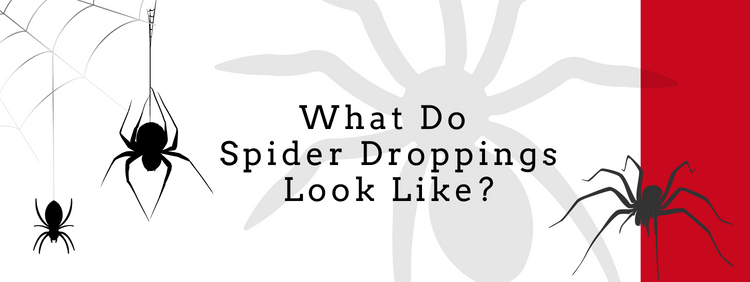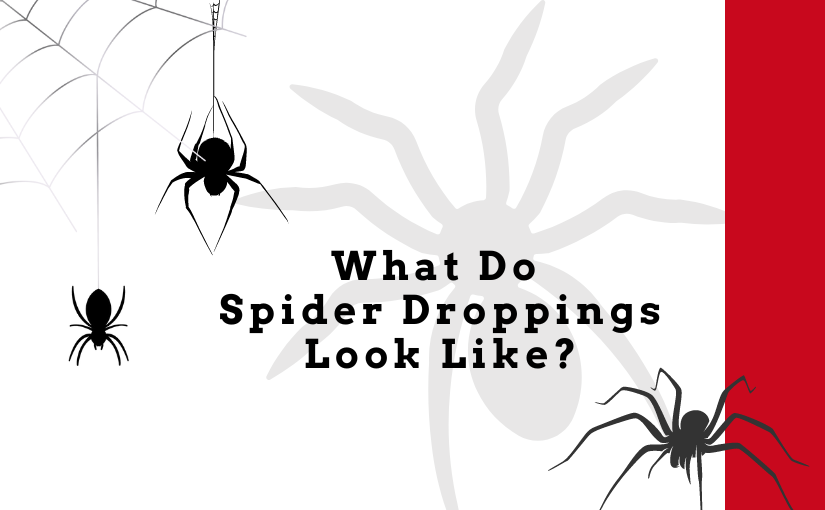
In many cases, the presence of droppings is an important sign that you have a pest infestation in your home. Does the same hold true for spiders? The presence of arachnid droppings could indicate that you have a problem that requires spider removal, but not everyone can recognize them for what they are. Here is a guide to spider droppings and what they might tell you about a possible infestation.
How Do Spiders Excrete Waste?
All living creatures have to excrete waste to prevent toxins from building up in their body tissues, and spiders are no exception. A spider’s droppings consist of waste materials from the food they eat which, in the case of spiders, is insects. A spider liquifies an insect’s body tissues before consuming them, so it is not surprising that a spider’s droppings are also mostly liquid.
While some animals have separate functions for urination and defecation, spiders do not. Their anus is the only orifice they have for excreting waste, so all the excrement comes out of the same hole. Their bodies have to conserve water resources, which is part of the reason why spiders do not urinate as we understand it.
Are Spider Droppings Dangerous or Toxic?
There are pests that can carry dangerous pathogens and spread them to humans through their feces. Fortunately, spider droppings do not appear to carry any harmful pathogens. It is believed that spider venom and blood may have antimicrobial properties that kill any pathogens that enter a spider’s body via the food it eats. Since spiders feed on flies that often feed specifically on animal feces or decaying flesh, this ability can keep the spider healthy.
A study intended to quantify how dangerous arachnid droppings are involved in feeding an experimental group of black widow spiders with only flies specifically known to carry pathogenic bacteria. Testing of the spider droppings showed no pathogens or harmful microbes remaining.
If you were to accidentally ingest spider droppings, it is possible that you could experience symptoms of fever, diarrhea, or vomiting. However, you would have to have ingested the droppings in huge amounts to have an effect. Practically speaking, spider droppings are not dangerous to humans.
What Do Spider Droppings Look Like?
Spider droppings tend to be dark in colour, though white droppings are not unheard of. Depending on what the spider has been eating, shades of brown, black, and gray are all likely. Since the excrement consists mostly of viscous liquids, spider droppings may resemble a small splatter of paint or ink.
You may find spider droppings on floors, walls, and furniture. Though the excrement is toxic, it can cause staining of these surfaces. If you find spider droppings in your home, you should clean them up as soon as possible or the stains could be permanent.
Do Spider Droppings Indicate an Infestation?
Spider droppings are one indication of a possible infestation. This is especially true if the droppings keep showing up in different places; it is a sign that there are many different spiders excreting waste in various areas of your home at more or less the same time.
The likelihood of a spider infestation is greater if there are other signs present along with the droppings. For example, webs, egg sacs, and the desiccated remains of insects are all signs of a spider infestation. When all of these signs occur together, a spider infestation is the most reasonable conclusion.
What Should You Do if You Find Spider Droppings?
The best thing to do if you find spider droppings or any other signs of an infestation is to call Truly Nolen for pest control in Barrie. Since spiders feed on insects, it is likely that you have more than one infestation. We get rid of all the pests, then perform prevention to keep them from coming back. Find out more about the services we offer in your area.
